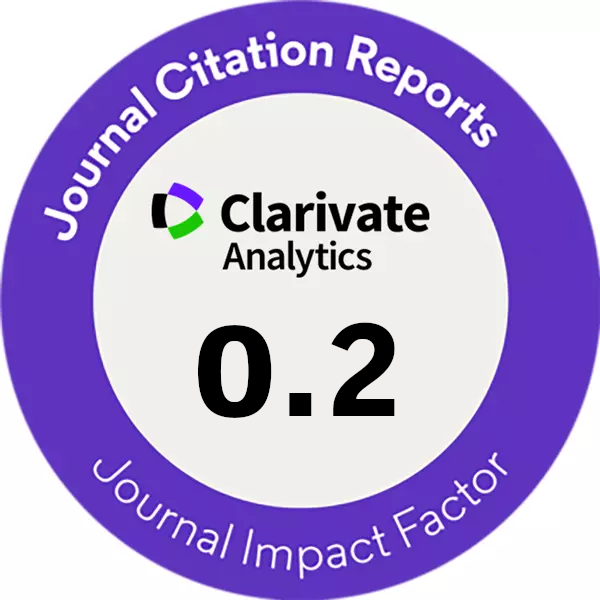MODELLING AND ANALYSIS OF AN IRREGULAR RAILWAY TRACK SYSTEM FOR COMPUTATION OF CRITICAL VELOCITY FOR LIMITING VERTICAL ACCELERATION
DOI:
https://doi.org/10.14311/CEJ.2018.01.0012Keywords:
Track irregularities, Passenger comfort, Sinusoidal track profile, Vertical accelerations in the train, Random sinusoidal curve generationAbstract
The irregularity in the railway tracks is a very common topic of interest among the researchers in recent times. The trains run on the tracks with very high velocities to meet the demands of the passengers. But due to the unevenness of the track, the body of the train car faces vertical accelerations, which in turn causes discomfort to the passengers sitting inside the train car. In the present report, vertical acceleration is analyzed for uneven tracks by taking the car body as a single degree of freedom model. The investigation shows a clear explanation of the critical velocity values for the train, so as to maintain the passenger comfort conditions. Random sinusoidal curves were generated using MATLAB to analyze the random unevenness of the track. It is observed that the vertical accelerations in the car body are directly proportional to the speed of the train. Finally, a critical velocity is proposed for a train running on uneven sinusoidal profile track such that, the vertical acceleration not exceeding 0.2g.
Downloads
References
Kourossis G., Connolly D. P., Verlinden O., 2014. Railway-induced ground vibrations – a review of vehicle effects, Journal of Rail Transportation. Vol. 2: 69-110
Arslan Y. Z., Sezgin A., Yagiz N., 2015. Improving the ride comfort of vehicle passenger using fuzzy sliding mode controller, Journal of vibration and control. Vol 21: 1667-1679.
Etienne Parizet, M. Amari, Vincent Roussarie, 2010. Contribution of noise and vertical vibration to comfort in a driving car. EuroRegio. pp.1.
Delgado R. et al., 2008. Dynamics of High-Speed Railway Bridges, Section 2.3.3 (CRC Press) 77 pp.
Saraf D.K. et al., 1998. A Technical Guide On Derailments, Section 4.8 (Government Of India Ministry Of Railways) 69 pp.
Rao S.S., 2011. Mechanical Vibrations, Section 3.6 (Pearson Education) 281 pp.
Knothe K., Stichel S, 2017. Rail Vehicle Dynamics, Chapter 3 (Springer International Publishing) 33 pp.
Inbanathan M.J., Weiland M., 1987. Bridge Vibrations Due To Vehicle Moving Over Rough Surface, Journal Of Structural Engineering. Vol. 113: 1994-2008.
Schenk C.A., Bergman L.A., 2003. Response of Continuous System with Stochastically Varying Surface Roughness to Moving Load, Journal of Engineering Mechanics. Vol. 129: 759-768.
Sun L., Deng X., 1998. Predicting Vertical Dynamic Loads Caused By Vehicle-Pavement Interaction, Journal of Transportation Engineering. Vol. 124: 470-478.
Lombaert G, Conte J. P., 2012. Random Vibration Analysis of Dynamic Vehicle-Bridge Interaction Due to Road Unevenness, Journal of Engineering Mechanics. Vol. 138: 816-825
Liu K., De Roeck G., Lombaert G., 2009. The effect of dynamic train-bridge interaction on the bridge response during a train passage. Journal of Sound and Vibration. Vol. 325: 240-251.
Zhang N., Tian Y., Xia H., 2016. A Train-Bridge Dynamic Interaction Analysis Method and Its Experimental Validation, Engineering. Vol. 2: 528-536.
Goicolea J. M., Antolin P., 2012. Dynamics of High-Speed Railways: Review of Design Issues and New Search for Lateral Dynamics, International Journal of Railway Technology. Vol. 1: 27-55.
Yang Y.B., Wu Y.S., 2002. Dynamic Stability of Trains Moving Over Bridges Shaken by Earthquakes, Journal of Sound and Vibration. Vol. 258: 65-94.
Gorbatjuk D., Brandstetter G., Fink J., 2016. Investigations for Simplified Consideration of Train-Bridge-Interaction based on Railjet High-speed Train, Procedia Engineering. Vol. 156: 116-123.
Yang X., Wang H., Jin X., 2015. Numerical Analysis of a Train-Bridge System Subjected to Earthquake and Running Safety Evaluation of Moving Train, Shock, and Vibration. Vol. 2016: 1-15.
Downloads
Published
Issue
Section
License
Copyright (c) 2023 Author

This work is licensed under a Creative Commons Attribution-NonCommercial 4.0 International License.
Authors who publish with this journal agree to the following terms:
- Authors retain copyright and grant the journal right of first publication with the work simultaneously licensed under a Creative Commons Attribution License that allows others to share the work with an acknowledgement of the work's authorship and initial publication in this journal.
- Authors are able to enter into separate, additional contractual arrangements for the non-exclusive distribution of the journal's published version of the work (e.g., post it to an institutional repository or publish it in a book), with an acknowledgement of its initial publication in this journal.
- Authors are permitted and encouraged to post their work online (e.g., in institutional repositories or on their website) prior to and during the submission process, as it can lead to productive exchanges, as well as earlier and greater citation of published work (See The Effect of Open Access).










